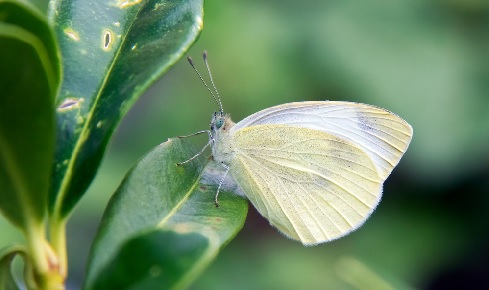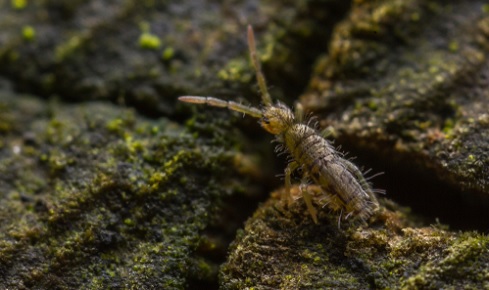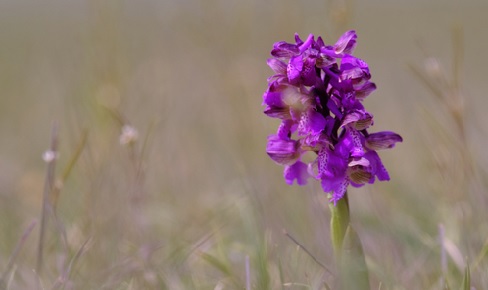All recordings great and small

Understanding changes in the natural world relies on good biological data. As James McCulloch explains, all contributions to this cause are precious
May 31st 2021
With potentially millions of extant species worldwide, a large proportion of them undescribed and even more unstudied, any attempt to ensure that no more species are lost to extinction may seem futile. Right here in the UK, animals, plants, fungi and other organisms are likely to be silently disappearing without us noticing or without ever being observed in the first place. However, the first and most important step in safeguarding the survival of these species is far simpler than many people imagine – and anyone can make important breakthroughs.
When you think of the main methods of species conservation, such as land management, habitat creation, green infrastructure construction and captive breeding programmes, there’s one thing that each of them needs to be successful: data. Even something as complex as a captive breeding programme relies on relatively basic data, such as what a species eats and where it breeds – information that can be gleaned from a simple biological recording effort. Although some species thrive in captivity, for others their captive environment has to match what they would experience out in the wild and this data must be sourced from biological records.
Biological recording can take one of three routes: through organised citizen science projects; listing all you can identify (either from all or specific taxonomic groups) at a site, sometimes known as a ‘bioblitz’; or incidental recording of whatever you may come across on a day-to-day basis. With the first route the project usually has a specific goal. For instance, the Big Wasp Survey (www.bigwaspsurvey.org) aims to garner a better picture of the distribution of different social wasp species across the UK and see what might be affecting their populations. The latter two routes can be just as important, both scientifically and for conservation. There’s no need to devote lots of time either: just a minute spent peering under a log in my back garden revealed the Australasian flatworm (Kontikia ventrolineata), the first record for Surrey, while a short session sorting leaf litter using a bonsai sieve revealed an undescribed species of springtail (a small insect-like arthropod) that had never been recorded in the UK before.
 Writer James McCulloch found a species of springtail never recorded in the UK before simply by looking among some lead litter.
Writer James McCulloch found a species of springtail never recorded in the UK before simply by looking among some lead litter. Conservation programmes too often focus on charismatic megafauna such as mammals and birds, but every species, regardless of whether it is large, showy, feathered or furry, can benefit from biological recording and it is those under-appreciated taxa, such as invertebrates, that may in fact benefit most. For large species such as the Socorro dove (Zenaida graysoni), even with such a range-restricted population, it is often relatively easy to find and record their presence. However, with smaller organisms, concerted biological recording efforts are often the only way of determining a species’ presence at a locality or even its existence at all. This is one of the clearest benefits of biological recording: if you don’t know where a species lives or even whether it exists, how is it supposed to be conserved?
Rich biological data
Biological recording is about more than just confirming the presence of a species at a locality. In the case of the Socorro dove, one of the main challenges facing the reintroduction of this exceedingly rare bird is knowing what exactly caused its dramatic decline in the first place: was it human persecution, the introduction of invasive species or habitat degradation? If more biological recording efforts had been in place prior to the Socorro dove’s categorisation as ‘extinct in the wild’, it would be much easier to prevent it from slipping back into extinction once reintroduction is ready to take place.
Confirming the presence of a species at a particular locality can be the tipping point as to whether a planned development goes ahead or a crucial insight into how the site should be managed to maximise biodiversity, but the record’s associated data can be just as insightful. One of these possible data points is the date on which the record was made. This data can be used to indicate the phenology of a species – that is, the time of year the species goes through each part of its lifecycle.
One of the many initiatives across the country that is making use of data such as this is the Sussex Botanical Recording Society’s churchyard survey. This primarily aims to record the species of vascular plants present at churchyards across the county of Sussex, which can then be supplied to the land manager. If a rare or endangered species is discovered, phenological data can be consulted, which can inform the manager to only carry out activities such as mowing at particular times of the year in order to cause the least damage to the population of the rare plant.
One example is the green-winged orchid (Anacamptis morio), which flowers relatively early in the season. Habitat data supplied with biological records also tells us that this species needs nutrient-poor soils, meaning that cuttings have to be removed post-mowing. The land management of the site is often seen as the main act of conservation taking place, but in fact without the biological recording efforts that came before it, there may have been no such plan or even any recognition that conservation efforts were needed.
Tracking changes
Land management has long been a steadfast method of conservation, but as we head into the future biological recording will become especially prudent as the environment around us changes. With environmental change occurring at an increasingly fast rate, the impact this is having on species will need to be carefully tracked too.
Biological recording has shown that the southern small white butterfly (Pieris mannii) has expanded its distribution from its historic range around the Mediterranean and Asia Minor across Europe at a rate of 100km each year and is poised to cross the English Channel any day, if it hasn’t already, most likely as a result of climate change.
The way we farm is also having an observable impact on species, with populations of species such as the great yellow bumblebee (Bombus distinguendus) becoming more fragmented as a result of farming intensification. The distribution of the great yellow bumblebee, which used to be widespread across southern Britain, has shrunk to the extreme north of Scotland and the Outer Hebrides. This could soon be the fate of countless other species, but without biological recording it’s impossible to know how each species is faring and how best to prevent range restrictions such as this from happening.
 The green-winged orchid.
The green-winged orchid.Furthermore, it’s not just the environment that’s changing our ecosystems, but the species within them as well. Non-native species are appearing in our countryside now more than ever and there is only one way that they can be tracked. Natural colonisers such as the willow emerald damselfly (Chalcolestes viridis) often enter the landscape gradually, sometimes coexist with the same species at the point of origin and are usually similar to some of the species already there. However, those that are more exotic and brought to our shores by human activity can be quite dissimilar in terms of ecological needs to anything the ecosystem is used to.
The Asian hornet (Vespa velutina) has been imported into Western Europe from its native range in Southeast Asia and a nest of these formidable wasps can kill thousands of pollinators a day. The species with which it coexists in Asia have developed strategies to avoid predation, but the prey where it has been introduced have no such defences, with disastrous implications. In this situation, biological recording is essential in order to identify adventive populations and ensure that they cause as little damage to the local ecosystems as possible.
Ensuring accuracy
One of the most obvious criticisms of biological recording and citizen science projects is the accuracy of the data collected. The identification of many of the UK’s 70,000 species is difficult even for specialists and certain taxonomic groups can be prone to misidentifications by citizen scientists. However, there are systems in place to mitigate these issues. The recording schemes that collate and analyse records of particular taxonomic groups will vet the records they receive and, where necessary, omit those without sufficient evidence – such as inconclusive photographs or voucher specimens – from publications, databases and distribution maps. The recording schemes also provide valuable identification support to recorders of all abilities and will correct any misidentified photographs. As a result, even complete novices are able to dive into submitting important records without worrying about providing inaccurate data.
Although the threats facing our wildlife may seem huge, the key to solving these problems is a task that can be done by anyone, regardless of their previous experience of natural history or conservation. Everyone’s biological records can make a difference in research and conservation even if undertaken on an occasional, casual basis.
You can find more information on biological recording and how to get involved on the websites of the Biological Records Centre (www.brc.ac.uk) and the National Biodiversity Network (www.nbn.org.uk). You can send your records to either the specific taxonomic group recording scheme, with details available on the BRC website or to iRecord (www.brc.ac.uk/irecord). No matter how common a species might be, every single record is valuable and will be gratefully received by your local recording centres and recording schemes.
James McCulloch has won several awards for his biological recording projects, including the Bernard Skinner Award for excellence in entomology and the Gilbert White Youth Award for terrestrial and freshwater recording organised by the National Biodiversity Network.
1) Michael J. O. et al. A vision for global biodiversity monitoring with citizen science. Adv. Ecol. Res. 59 169–223 (2018).
2) Pescott, O. L et al. Ecological monitoring with citizen science: the design and implementation of schemes for recording plants in Britain and Ireland. Biol. J. Linn. Soc. 115(3) 505–521 (2015).


